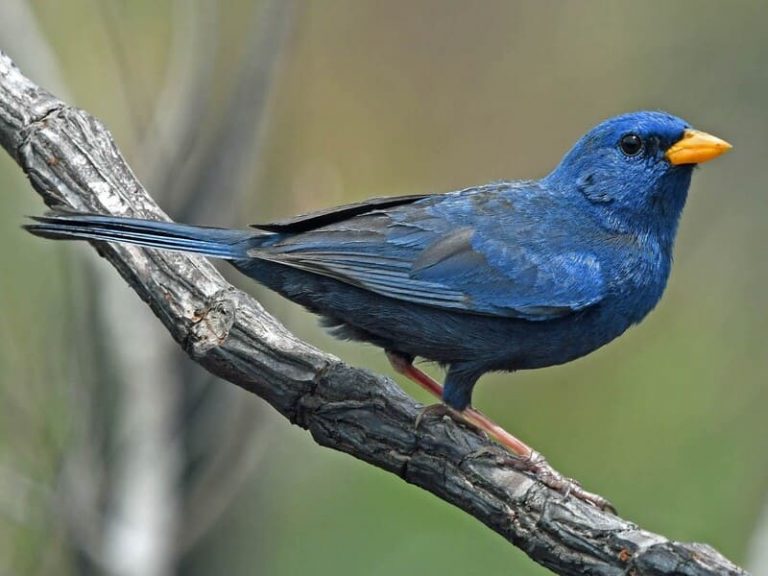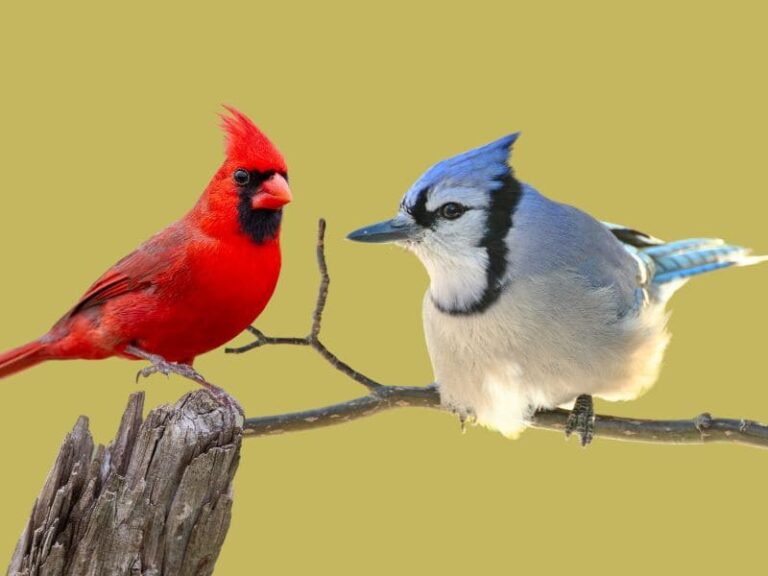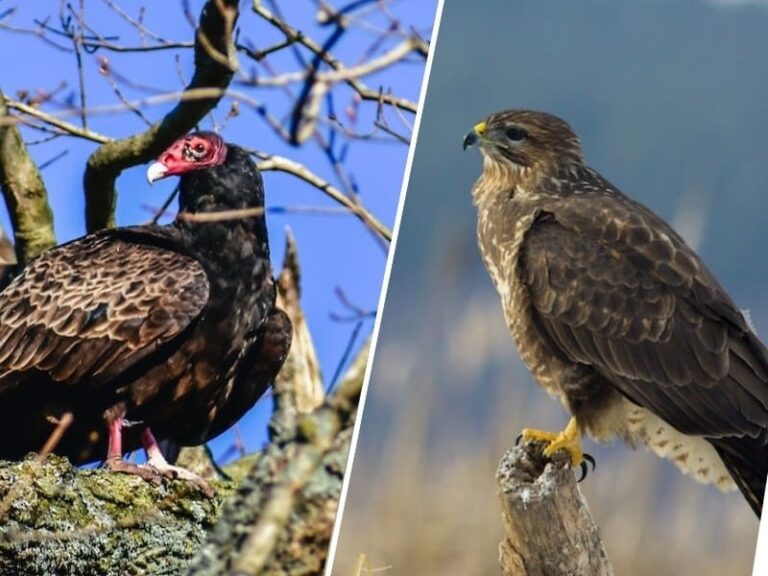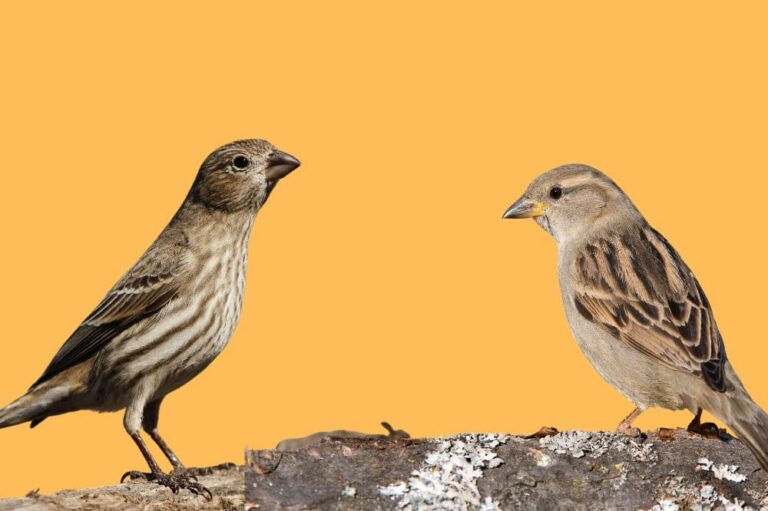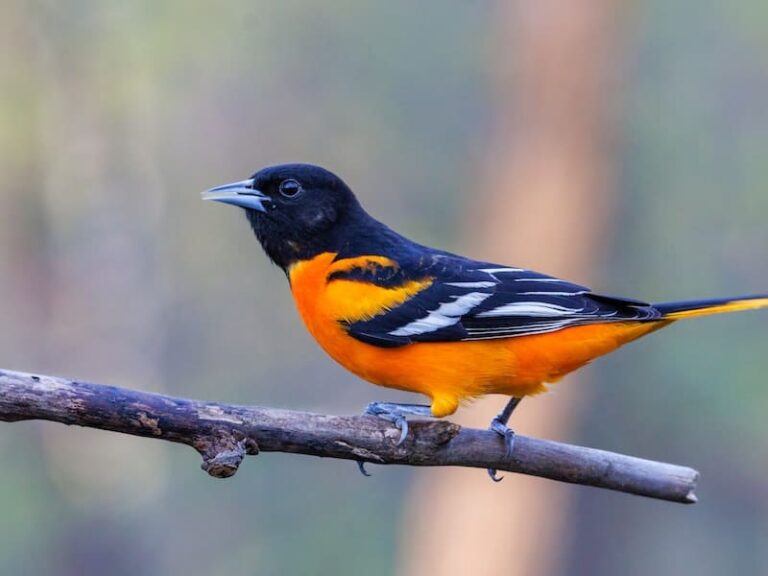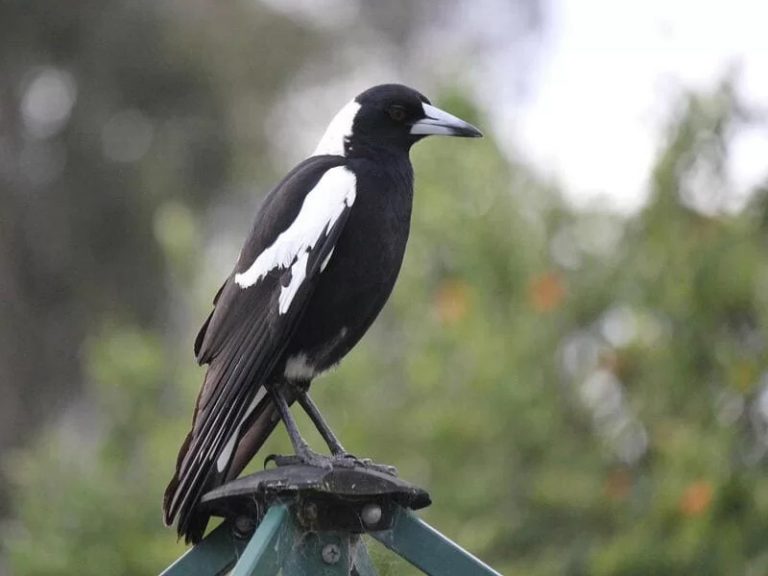8 Species Of Woodpeckers In Alabama
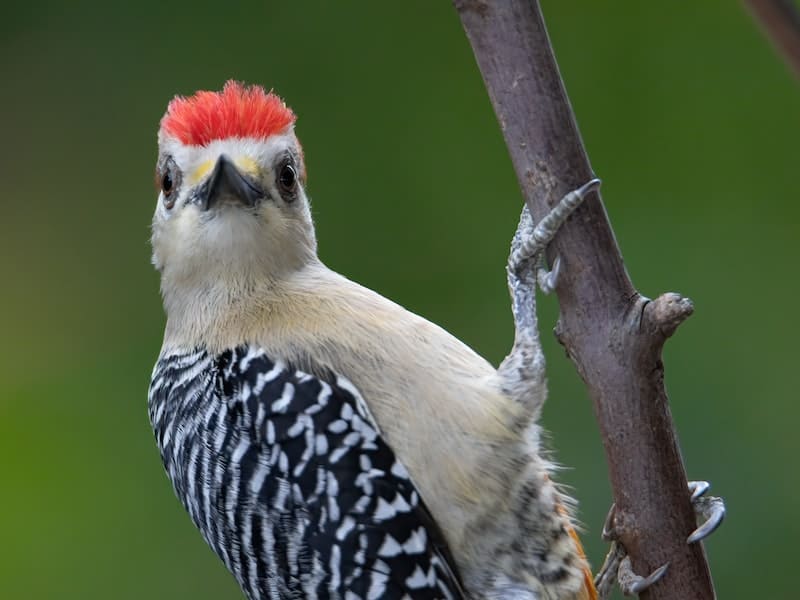
When it comes to birds living on the outskirts of Alabama, few flying species can rival the majestic beauty of woodpeckers.
These impressive creatures don’t get enough attention for their intelligence and stunning colors, which is why we’re here to showcase 8 incredible woodpecker species native to this vibrant state.
Read this article to get an up-close glimpse into these feathered friends that inhabit Alabama’s forests and yards in search of food.
All that remains is learning about their behavior, so fasten your seatbelts as you embark on a journey through eight magnificent woodpeckers in Alabama.
What type of woodpeckers live in Alabama?
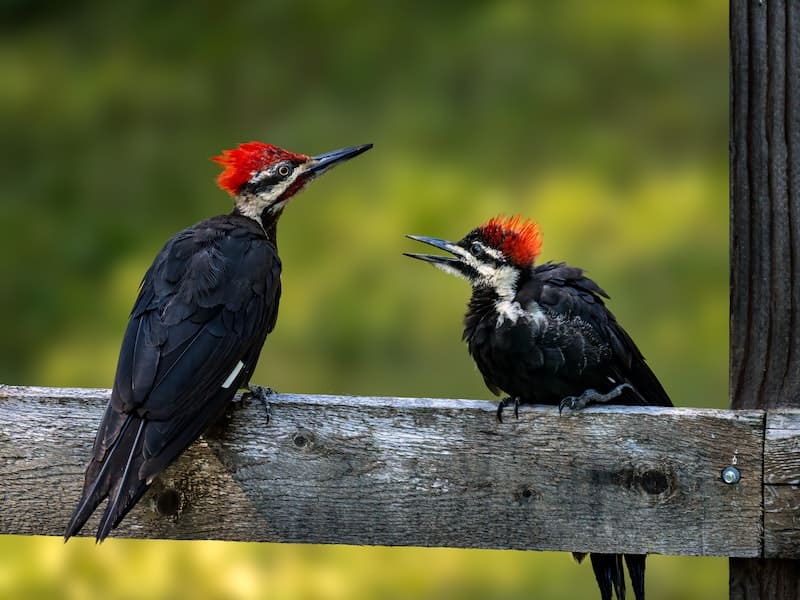
Alabama is home to several species of woodpecker. Among them are the Red-headed Woodpecker, Pileated Woodpecker, and Downy Woodpecker.
These strong birds are capable of hammering forcefully on trees with their beaks to uncover insects, larvae, and other food beneath tree bark.
The Red-headed Woodpecker sports its namesake reddish head and neck that is surrounded by a white back.
Found primarily in deciduous forests in the southeast United States, these woodpeckers consume nuts, fruits, wood-boring insects, and sometimes even small amphibians or snakes.
Other than the distinctive red head of the male Red-headed Woodpecker, it can be difficult to distinguish between males and females, which makes it great fun to observe this species.
The larger Pileated Woodpeckers have black wings with white stripes, while their undersides are primarily white with black spots found along their necks and tails.
Spanning an impressive 18 inches from their heads to the tips of their tails, these birds search out grubs from decaying logs and insect nests deep within trees for meals.
Finally, the Downy Woodpecker stands at about seven inches high and has a shorter bill than some other species but is just as capable of finding tasty bugs when drumming against tree trunks for sustenance.
Alabama offers nature lovers plenty of chances to observe all three types of woodpeckers active throughout the state’s beautiful forests.
Depending on the season and habitat, these multiple species may be seen tapping away at trees or flitting around yards and parks.
Each type of woodpecker has unique behaviors and specific requirements for their preferred habitat, so keep an eye out for them when enjoying time outdoors. Let’s discuss it in detail now.
Red-headed Woodpecker
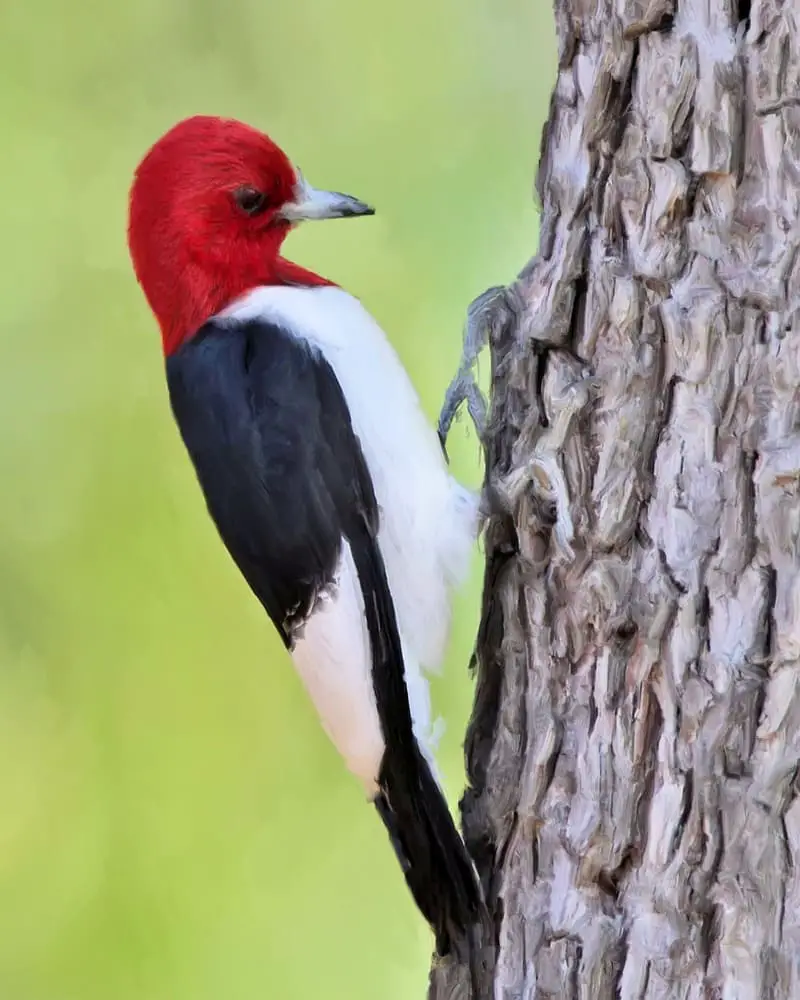
- Length: 7.5-9.1 in
- Weight: 2.0-3.2 oz
- Wingspan: 16.5 in
The red-headed woodpecker is an impressive species found primarily in Alabama. Although it has a widespread range, it can be difficult to find due to its elusive nature.
This woodpecker is striking with its bright red head, black body, and white nape, making it easy to identify in the tree tops.
It prefers foraging for insects along dead or dying trees, favoring pine and open habitat, but will also feed on berries. Its length is 7.5-9.1 inches, weight is 2.0-3.2 oz, and wingspan is 16.5 inches.
These woodpeckers can be heard from great distances as they drum their bills on cavities inside large trees or announce themselves through ringing calls throughout the canopy.
While a beautiful sight to witness in the wild, they need our protection so future generations can enjoy these majestic birds too.
Yellow-bellied sapsucker
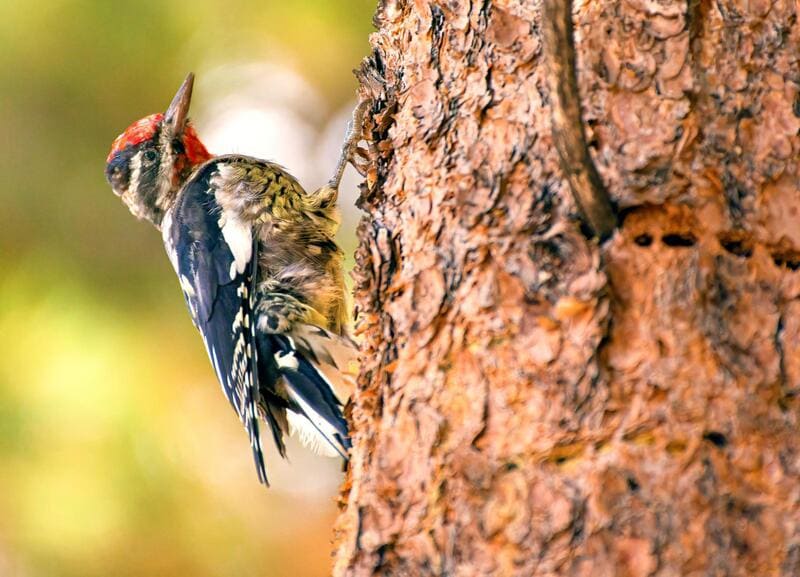
- Length: 7.1-8.7 in
- Weight: 1.5-1.9 oz
- Wingspan: 13.4-15.8 in
The yellow-bellied sapsucker is a type of woodpecker found in Alabama. They forage insects, spiders, and plant material on tree trunks, catching whatever food they can find during their regular searches.
These birds often create sap wells to attract more insects, allowing them to eat larger amounts of protein-rich bugs. Its length is 7.1-8.7 inches, weight is 1.5-1.9 oz and wingspan is 13.4-15.8 inches.
The sapsucker has a mostly black body with white markings and bright red head and shoulder areas.
They also have distinct yellow bellies and a conspicuous white stripe going up their back. In the summer months, these birds are a beautiful sight for those that take the chance to look up at the trees in Alabama
Red-bellied woodpecker
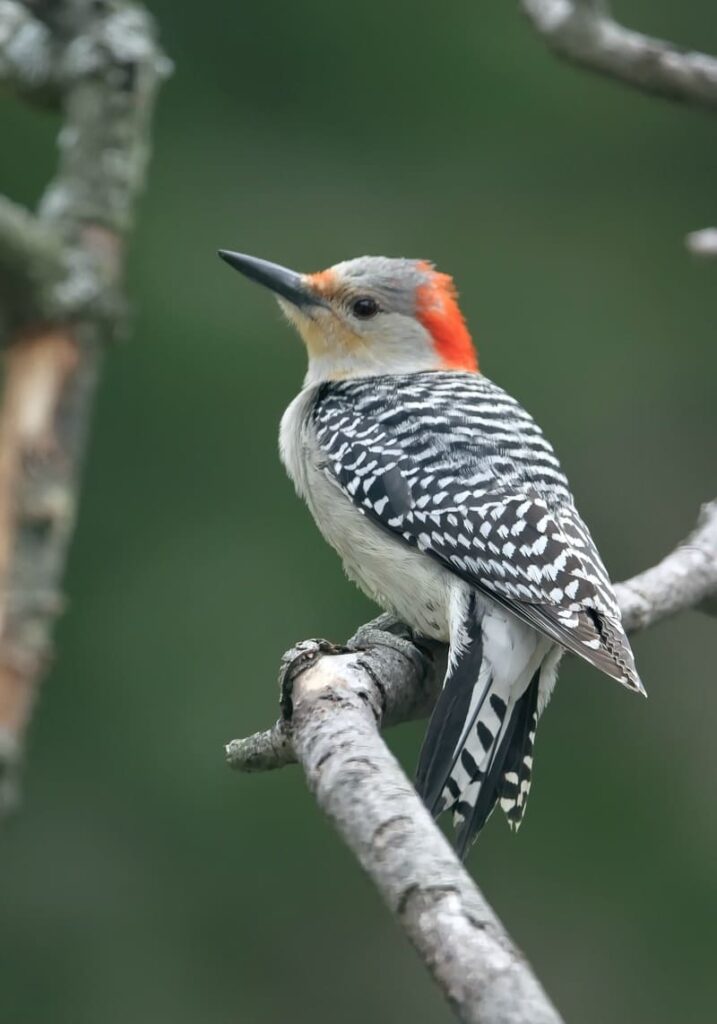
- Length: 9.4 in
- Weight: 2.0-3.2 oz
- Wingspan: 13.0-16.5 in
Alabama is lucky to boast a wide variety of bird species, and one of its most iconic is the red-bellied woodpecker.
These small birds are often found in Alabama’s deciduous forests, where they spend their days hammering away at trees looking for food like ants, beetles, and caterpillars.
Its length is 9.4 inches, weight is 2.0-3.2 oz, and wingspan is 13.0-16.5 inches.
Red-bellied woodpeckers also use their beaks to create nesting holes in tree trunks that provide shelter for themselves and many other kinds of wildlife as well.
With a bright red cap on their head, white stripes along their wings, and a splash of red on their bellies, these birds are easy to spot even from a distance, making them a delight to watch from afar or up close.
Pileated woodpecker
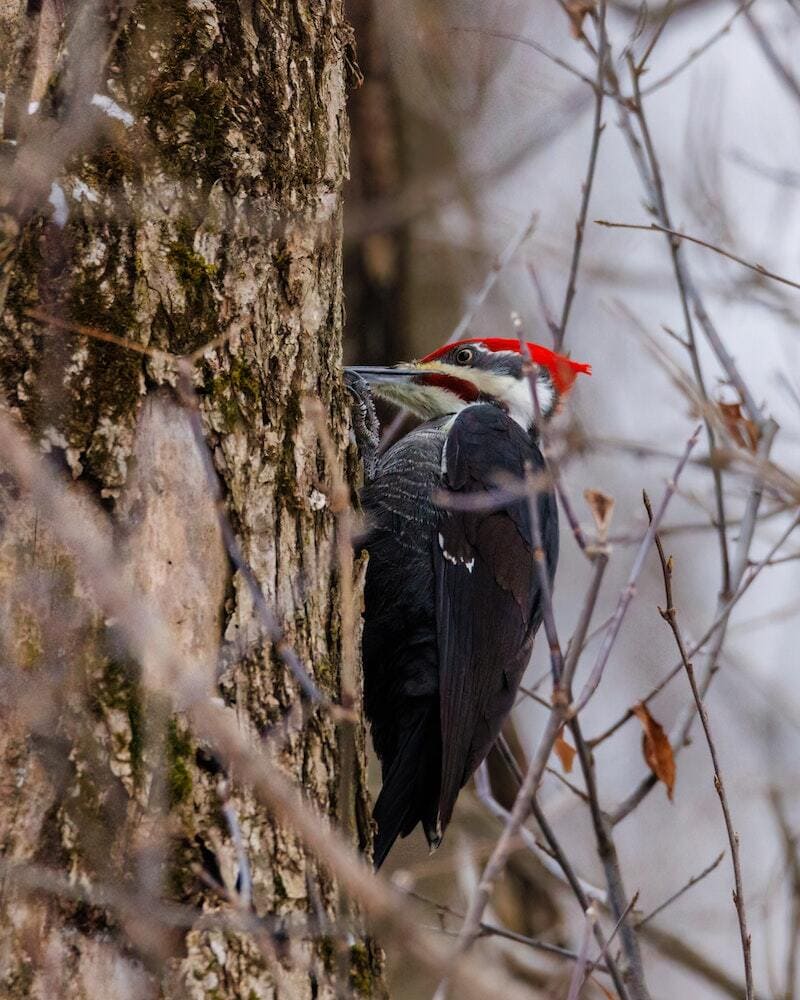
- Length: 15.8-19.3 in
- Weight: 8.8-12.3 oz
- Wingspan: 26.0-29.5 in
The pileated woodpecker, an iconic bird and Alabama’s largest woodpecker, has a deep red crest and a wingspan that reaches up to 19 inches.
Interestingly, although they have a fairly large range across North America, the southeastern corner of Alabama is one of the best places in the nation to observe these amazing birds in action.
Not only are the resident populations plentiful here, but their diets often drop them right near humans. These distant relatives of dinosaurs can be found year-round, searching logs and trees for insects.
Its length is 15.8-19.3 inches, weight is 8.8-12.3 oz, and wingspan is 26.0-29.5 inches.
They have even been observed stealing acorns from nesting blue jays. The pileated woodpecker offers visitors a special peek into the mysteries of wild nature, making it well worth seeking out during a trip to Alabama.
Red-cockaded woodpecker
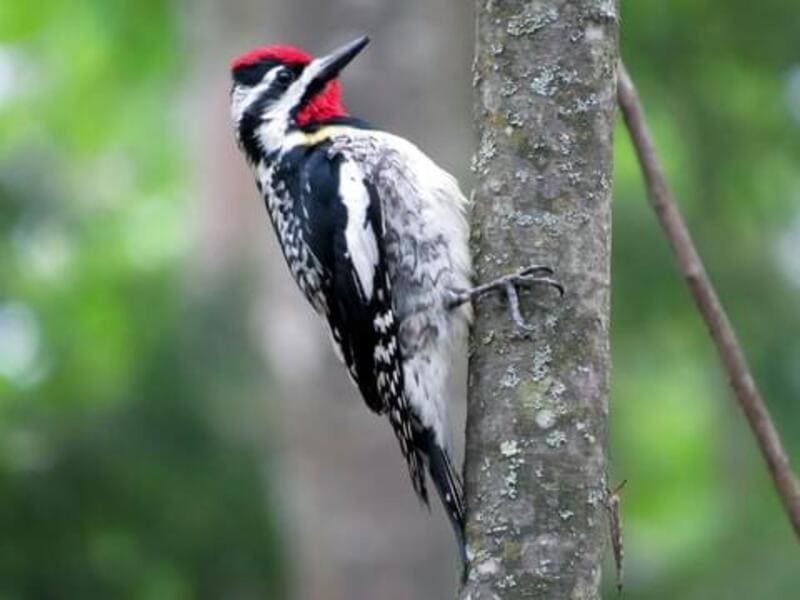
- Length: 7.9-9.1 in
- Weight: 1.5-1.8 oz
- Wingspan: 14.2 in
Alabama is an important habitat for the endangered Red-cockaded woodpecker, with populations outside of Florida concentrated in the state.
They’re a tree-dependent species that often nest and live in longleaf pine forest habitats found across southern portions of Alabama.
Its length is 7.9-9.1 inches, weight is 1.5-1.8 oz, and wingspan is 14.2 inches.
Our state is currently home to more than six hundred active clusters where these birds thrive, though their population has been in decline due to logging activity, frequent wildfires, and urban development.
Organizations are now putting a great deal of effort into preserving the remaining habitats and restoring new ones through a variety of initiatives that ensure they remain stable and viable places for these woodpeckers to thrive in our state.
Downy woodpecker
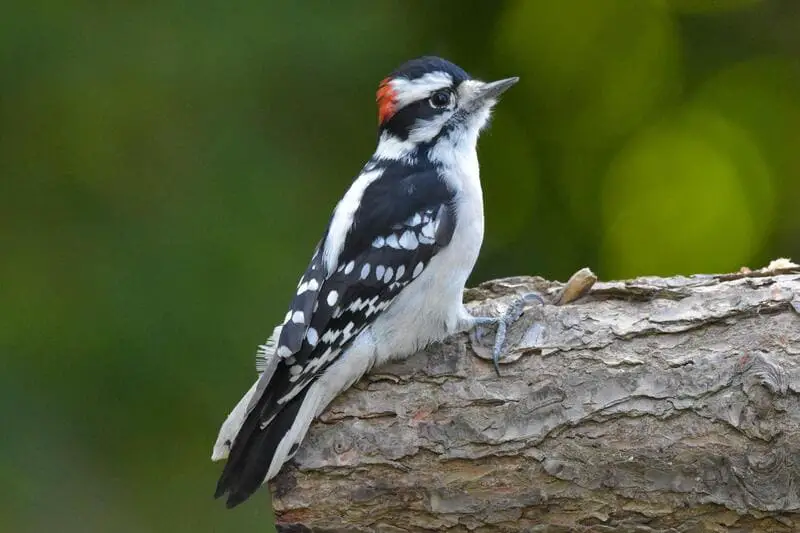
- Length: 5.5-6.7 in
- Weight: 0.7-1.0 oz
- Wingspan: 9.8-11.8 in
Alabama’s woodlands provide excellent habitats for downy woodpeckers, and they are a common sight in the deciduous forests of the state.
These stunning birds are quite small and have black and white feathers that make them look like tiny clowns as they hop across branches.
Its length is 5.5-6.7 inches, weight is 0.7-1.0 oz, and wingspan is 9.8-11.8 inches.
Downy Woodpeckers peck with short strokes, leaving shallow pits in which ants live when the weather is dry or shallow crevices where insects can be found during rainy days.
This adaptability helps them survive in Alabama’s fluctuating climate and makes them successful creatures of Alabama’s woodlands.
Northern flicker
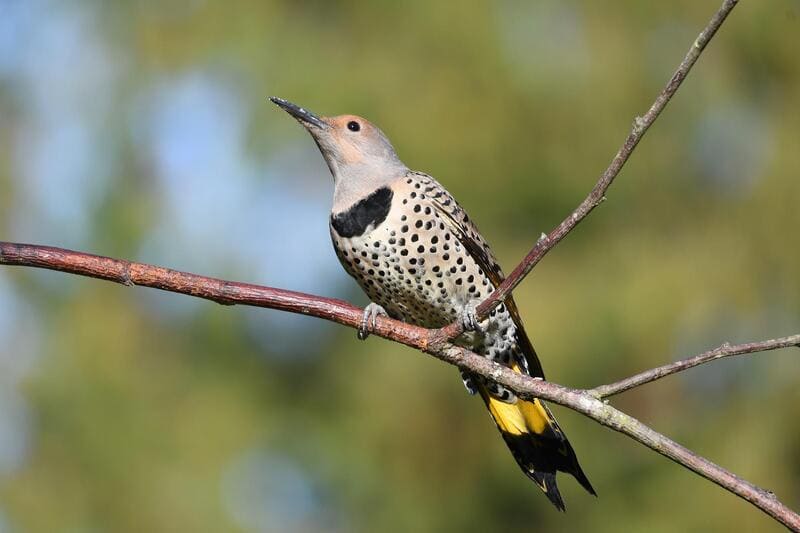
- Length: 11.0-12.2 in
- Weight: 3.9-5.6 oz
- Wingspan: 16.5-20.1 in
The Northern flicker is an amazing bird found in Alabama. This species of woodpecker has beautiful plumage with red-shafted wings and yellow-shafted tail feathers. It is also known for its distinctive call, which can be heard all over the state.
Its length is 11.0-12.2 inches, weight is 3.9-5.6 oz, and wingspan is 16.5-20.1 inches.
These birds have adapted to both rural and urban environments, nesting in dead trees or wooden structures such as fences and houses.
They are seen commonly during the spring and summer months, where they tend to congregate around lightly wooded areas searching for food.
Their diet includes ants, termites, and beetle larvae, making them important parts of the ecosystem in Alabama. It’s always exciting when these friendly birds come around each year.
Hairy woodpecker
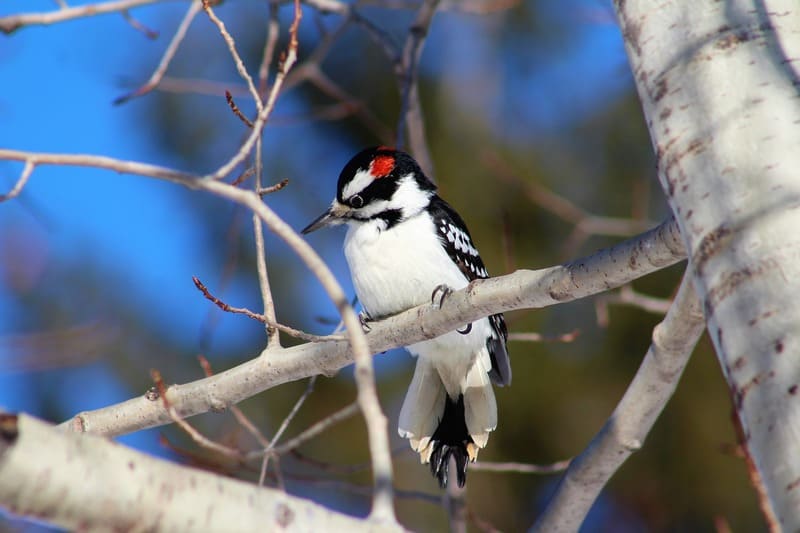
- Length: 7.1-10.2 in
- Weight: 1.4-3.4 oz
- Wingspan: 13.0-16.1 in
The Hairy Woodpecker is a delightful bird to find in Alabama! These beautiful birds can be found ranging across forests and wooded areas, which fill the state’s many parks.
They have a unique call that can often be heard sounding through the trees. It is one of the easier birds to spot.
Its length is 7.1-10.2 inches, weight is 1.4-3.4 oz, and wingspan is 13.0-16.1 inches.
The Hairy Woodpecker has a slightly larger body than other types of Woodpeckers, with distinctive white stripes running down its back, along with speckles of white on their wings.
Its powerful bill helps them excavate nests, while they mainly feed on insects and their larvae from tree bark and rotting wood.
All around Alabama, these stunning birds bring vitality and life to our forests, always brightening up a walk through nature.
FAQs
Let us discuss some most frequently asked questions about different species of woodpeckers that are found in the state of Alabama.
How Frequently Woodpeckers are Spotted in Alabama in Summer and Winter?
Alabama residents love to watch the uncommon beauty of woodpeckers as they search for lunch around their homes.
During the warmer months, one can observe these birds flitting about, contacting with their striking red crests and steel grey wings.
Winter provides a slightly different experience since woodpeckers tend to remain quiet during the cold season and are less visible.
Nevertheless, if one is watching carefully and knows where to look, spotting a woodpecker in winter is possible; their black-and-white feathers are much easier to distinguish on fully frosted trees.
Throughout both seasons, carving out time to observe Alabama’s woodpeckers is a rewarding pursuit that many locals take part in!
What attracts woodpeckers to your house?
Woodpeckers are attracted to a house for many reasons. A major factor is the presence of wooden siding, as woodpeckers often search for food on trees or wooden structures.
Another factor is the proximity to a wooded area, as woodpeckers typically prefer areas with tree cover and dense foliage. Additionally, bathrooms and gutters provide access to insect prey, which can be attractive to woodpeckers in search of their favorite foods.
Finally, bird feeders in your yard often provide an additional source of food that may draw in all types of birds, including woodpeckers.
All these factors combine to make your home more likely to attract various species of woodpeckers.
How do you tell the difference between a downy woodpecker and a hairy woodpecker?
Woodpeckers can often be hard to identify and tell apart, especially when trying to distinguish two species, like the downy woodpecker and the hairy woodpecker. The best way to do this is to pay careful attention to their color pattern.
Downy woodpeckers are typically smaller than hairy woodpeckers and have a white patch on the back of their heads, whereas the hairy woodpecker usually has an entirely black head.
Additionally, downy woodpeckers have black wings with white lines near their shoulders, whereas hairy woodpeckers will have all-black wings without any extra markings or patches of white or yellow.
Finally, if you want a surefire way to tell them apart then take a listen. Woodpeckers make a soft ‘pik-pik’ sound, while Hairy Woodpeckers make more of a ‘wick’ noise. With these distinctions in mind, you should be able to accurately identify each species.
What months are woodpeckers most active?
Woodpeckers are most active during the spring and summer months, especially in May and June. During this time of year, both male and female woodpeckers work hard to build their homes and prepare for nesting.
Male woodpeckers will also make excursions to find food, both for themselves and their soon-to-arrive offspring.
As with most birds, early morning hours tend to be the peak times of activity for woodpeckers as they search for sustenance and look for materials to build or reinforce the nest.
Although it may be easier to spot a woodpecker during these warmer months because of this increased activity, lucky viewers may still catch sight of a woodpecker during any month of the year.
Final Words
Though they might not be the most abundant bird in Alabama, woodpeckers offer a wide variety of colors and subspecies that make them interesting to watch and study.
If you’re lucky enough to spot one of these birds, take a moment to appreciate the different features that set it apart from other species.
Knowing more about the animals around us can help us foster a deeper appreciation for nature and all the creatures that call Alabama home.

